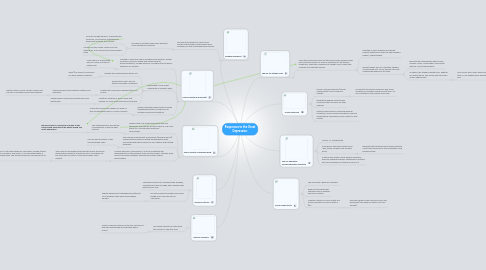
1. Franklin Roosevelt
1.1. Became the President in 1933 via his platform that helped create public work programs for the unemployed and farmers.
1.1.1. Included an act that made many different social assistance programs.
1.1.1.1. Includes old age pension, unemployment insurance, and financial assistance for dependent mothers and children.
1.1.1.2. Did not pull the United States from the depression, but saved millions and provided hope
2. Prime Minister Mackenzie King
2.1. Believed that The Great Depression was only temporary and that "he would not give a "five-cent piece" to a Conservative provincial government.
2.1.1. This statement was used by the Conservatives to win the next election.
2.1.1.1. Returned back to Mackenzie King due to the voters being frustrated at his ability during The Great Depression.
2.2. The National Employment Commission (which he set up) clashed with his ideas of letting the depression pass, recommending that he spend for job creation and training programs.
2.2.1. He only paid a fraction of the recommended value.
2.3. Created the Royal Commission in 1937 to investigate the responsibilities of the different levels of government. This was done due to the tension between the political and the federal governments.
2.3.1. They later recommended they give the poorer provinces equalization payments to basically let all Canadians live the same kind of service. (called the Rowell-Sirois Report)
2.3.1.1. The creation of the report however, was when Canada started to become involved in World War II, and was either taken in later or pushed aside. The economy was also recovering on its own.
3. Prime Minister R.B Bennett
3.1. Created a "New Deal" which included fairer taxation, worker insurance, minimum wages and better working hours/conditions, old age pensions, and agricultural support programs for farmers.
3.1.1. Many saw it as a desperate plea for votes, and did not believe him.
3.2. Responded to The Great Depression in different ways
3.2.1. Created the Unemployment Relief Act
3.2.1.1. Gave $20 million to provinces for work creation programs.
3.2.2. Raised tariffs up to 50% to protect Canadian Companies
3.2.3. Created the Prairie Farm Rehabilitation Act in 1935
3.2.3.1. Helped farmers build irrigation systems and reservoirs
3.2.3.1.1. Was too late for many farmers, many have left due to drought and moved elsewhere
3.2.4. Created a network of work camps that offered 20 cents a day with room and board.
3.2.4.1. Shelters were usually bug-infested and food was terrible.
3.3. Worker frustration being publicly shown threatened Bennett, in response, he outlawed communist agitation.
3.3.1. Convicted Communist Leader Tim Buck of this and sentenced him to 2 years of prison.
4. Mitchell Hepburn
4.1. Won wide support by supporting the causes of "the little man".
4.1.1. Tried to improve Ontario's economy, but did not help the unemployed and opposed labour unions.
5. Dufferin Pattullo
5.1. Introduced reforms to shortening the workday, increase the minimum wage, and increase relief payments by 20%.
5.2. Did many projects like the Fraser River bridge and a new city hall for Vancouver
5.2.1. Federal government challenged his authority to do programs that were inside federal domain.
6. The On-to-Ottawa Trek
6.1. More than a thousand men left the relief camps, holding rallies and collecting money for food in opposition to the terrible conditions. They then crowded into freight cars to send their complaints to Bennett himself.
6.1.1. Resulted in 2000 trekkers and gained national attention by the time they reached Regina, Saskatchewan
6.1.2. Bennett sends RCMP to stop the trekkers, confining them to a local stadium and only allowing the leaders to proceed.
6.1.2.1. Bennett later attacked the Relief Camp Workers Union, calling them "communist radicals" and "troublemakers".
6.1.2.2. In Regina, the trekkers fought back, fighting for several hours. This would later be known as the "Regina Riot."
6.1.2.2.1. One officer died, many were injured, and a total of 130 trekkers were arrested in the end.
7. The Co-operative Commonwealth Federation
7.1. Led by J.S. Woodsworth
7.2. Founded by the Prairie provinces in 1932, being Canada's first socialist party.
7.2.1. Believed that the government should partially control the economy so that Canadians could benefit equally.
7.3. Platform was known as the Regina Manifesto, basically supporting public ownership of industry and social programs for those in need of it.
8. Social Credit Party
8.1. Led by William "Bible Bill" Aberhart
8.2. Based on the belief that capitalism was a wasteful economic system.
8.3. Created a theory of social credit and a basic dividend for each citizen of $25
8.3.1. Was shot down by the Supreme Court and disallowed (still stayed in power until 1971 though)
9. Union Nationale
9.1. Led by Maurice Duplessis (former Conservative.) and a couple of Liberals.
9.1.1. He did little to improve economic and social conditions in Quebec during his first term. He still managed to stay premier until 1959.

